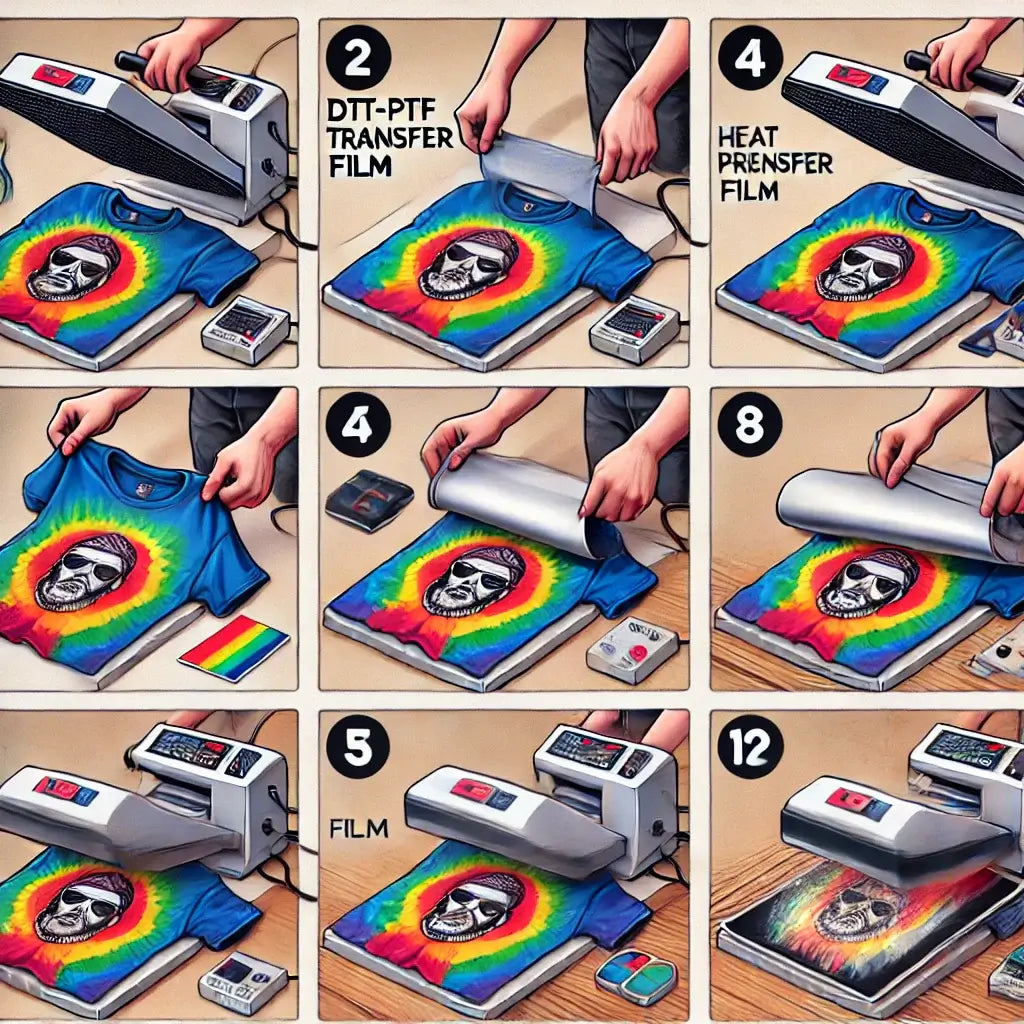
How to Press DTF Transfers
Share
Pressing DTF (Direct to Film) transfers onto fabric involves a specific process to ensure the design adheres properly and lasts long. Here’s a step-by-step guide on how to press DTF transfers effectively:
Materials Needed
- DTF transfer film with your printed design
- Heat press machine
- Teflon sheet or parchment paper
- Garment or fabric to be printed
Step-by-Step Guide
1. Preheat the Heat Press
- Set your heat press to the recommended temperature, which is usually around 320°F to 340°F (160°C to 170°C).
- The time setting should be between 10 to 15 seconds for the actual press.
2. Prepare the Garment
- Ensure the fabric or garment is clean and free from wrinkles.
- Pre-press the garment for 2 to 3 seconds to remove any moisture and wrinkles, which helps in achieving a smoother application.
3. Position the Transfer
- Place the DTF transfer film onto the garment with the printed side facing up.
- Ensure it is correctly aligned and positioned where you want the design to be transferred.
4. Protect the Transfer
- Cover the DTF transfer and the area around it with a Teflon sheet or parchment paper to protect both the fabric and the heat press plate from any ink or adhesive residue.
5. Press the Transfer
- Press down the heat press and start the timer.
- Apply medium to high pressure to ensure the adhesive melts and bonds properly with the fabric.
6. Peel the Film
- Once the time is up, lift the press and peel off the film. Peeling can be hot or cold based on the type of adhesive used:
- Hot Peel: Peel the film off immediately while it is still hot.
- Cold Peel: Allow the transfer to cool down completely before peeling off the film.
7. Post-Press
- Optionally, you can place the Teflon sheet back over the printed design and press it again for a few seconds. This step helps to further set the print and ensure its durability.
8. Cool Down
- Let the garment cool completely before handling further.
Tips for Success
- Consistent Pressure: Ensure that the pressure applied is even across the transfer to avoid any areas not properly adhering.
- Check Manufacturer Instructions: Some DTF films or inks might have specific requirements; always check the guidelines provided.
- Test Print: It's a good idea to do a test print on a similar fabric to ensure settings and placement are correct before committing to the final piece.
By following these steps, you can achieve a high-quality and durable application of your DTF designs on various textiles, making this method ideal for both DIY projects and professional production runs.
